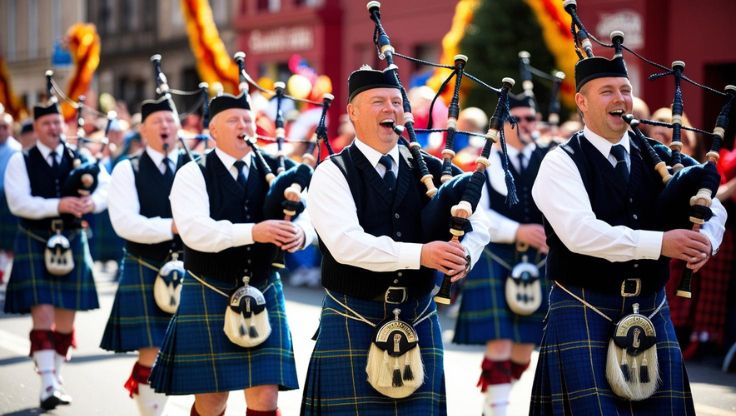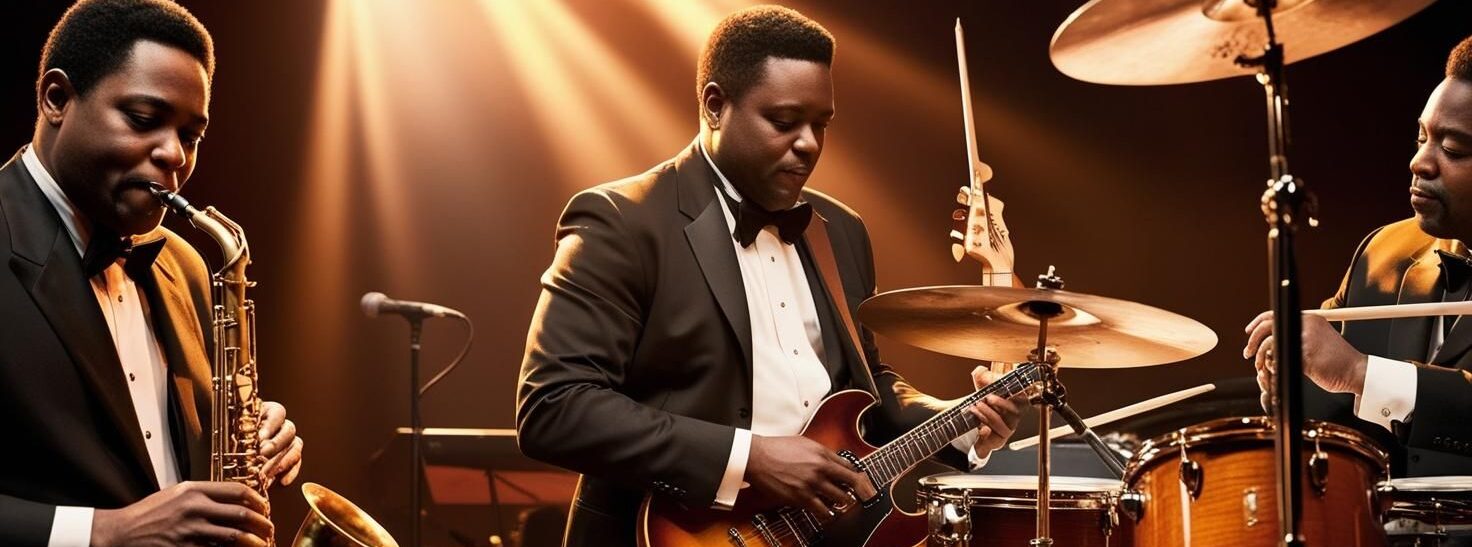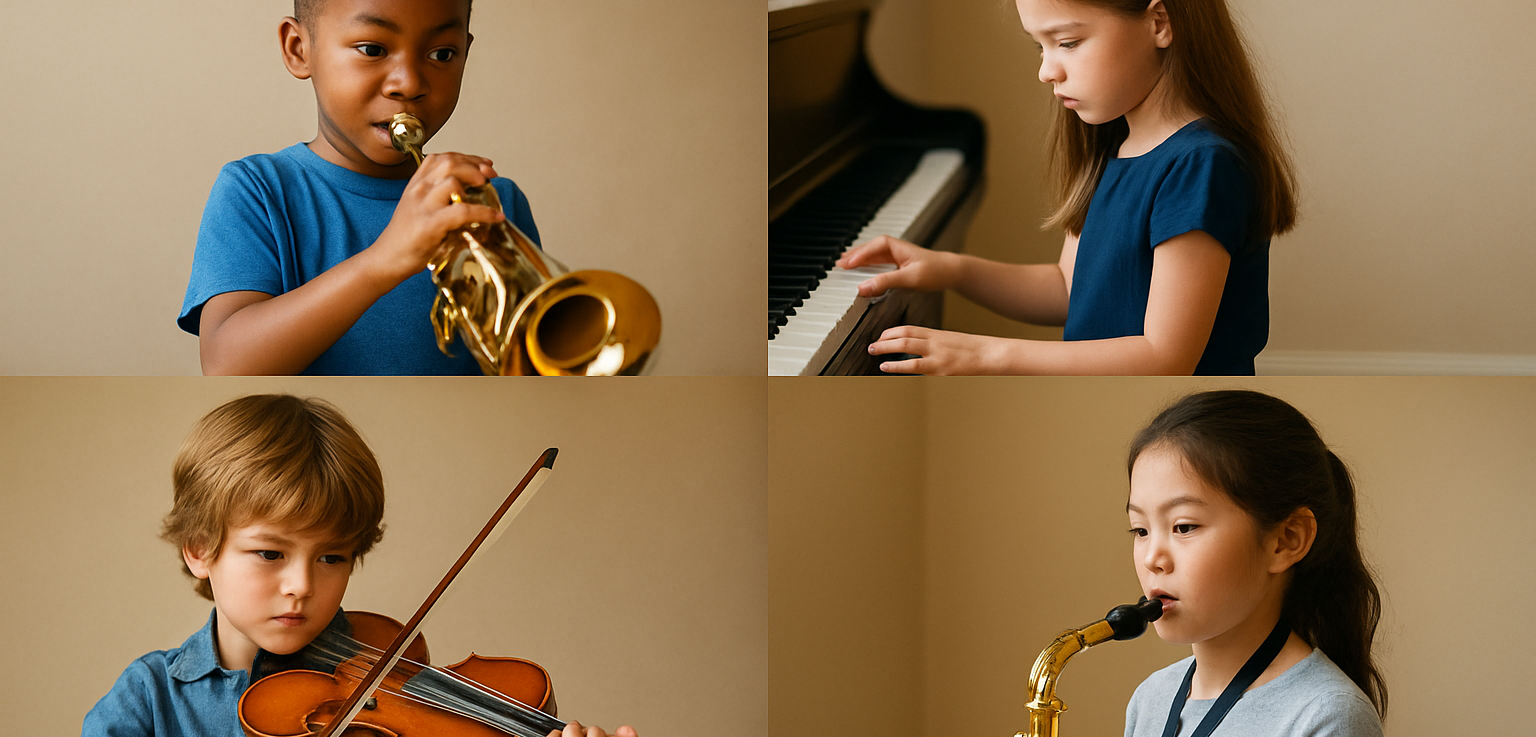Bagpipes might make you think of green rolling hills and wool kilts, but this mighty instrument has a past as robust as its sound. They weren’t just born from the misty glens of Scotland; these pipes have a deeply-rooted history across Europe. Centuries ago, bagpipes played an essential role in social and military contexts, serving as a means of communication on ancient battlefields. With a sound that could carry across vast distances, bagpipes were used to inspire troops and intimidate foes. Picture soldiers gearing up for battle with the cacophony of bagpipes ringing through the air—it was enough to make anyone think twice!
The cultural significance of bagpipes really took off in the Scottish and Irish regions. In Scotland, they became a vital part of military and civilian life, while in Ireland, they were a staple in traditional music and dances. Irish bagpipes are distinct, known as the uilleann pipes, and feature a softer, more nuanced sound, perfect for the pub or the parlor. This unique version of the instrument quickly became central to Irish celebrations, curling the heads of dancing revelers with its haunting tunes.
But how did we get from the primitive reed versions to the finely crafted bagpipes we see today? Over time, this instrument has evolved significantly. Early versions were made from whatever materials locals could find—animal skins for the bags or hollowed bones for pipes. Today, craftsmanship has turned bagpipes into pieces of musical artistry, with beautiful woods and polished metals. So, bagpipes aren’t just relics of the past; they’re symbols of tradition and innovation coming together.
Throw in a funny tidbit from history: did you know that bagpipes were once banned as instruments of war by the British? It’s true! The thought was that the pipes boosted too much morale among the ‘enemy.’ With humor and a bit of rebellion in their DNA, bagpipes have survived through the ages and keep bringing people together, whether in times of joy or moments of remembrance.
The Mediator of Melodies: Uniting Communities Through the Bagpipes
Bagpipes have a knack for turning any mundane occasion into a festival of sound. This is especially true in Irish communities, where the instrument adds a distinct cultural flair to celebrations and gatherings. Bring a bagpipe to any event, and you’ve got the kind of party that people talk about for years. In Ireland, the bagpipes strike a chord that resonates deeply with the sense of heritage and community pride.
In traditional Irish festivities and parades, bagpipes hold a seat of honor. Influencing every tune from joyous jigs to soulful laments, bagpipes weave tales of lore and laughter. They serve as the backdrop to St. Patrick’s Day celebrations, setting the stage for communal bonding and elaborate pageantry. It’s a sound that pulls everyone together, making strangers into friends over a pint.
Beyond solo serenades, community bagpipe bands are where the real magic happens. These bands are often made up of local enthusiasts who straddle all ages and walks of life. Whether performing in regional festivals or international competitions, their concerts become town hall meetings, reinforcing bonds within neighborhoods. The bagpipe band, once merely a local charm, finds itself at the center of cultural exchange and camaraderie.

And let’s be honest, how many times have neighbors rung up about noise complaints because the neighborhood’s bagpipe band was practicing? More than a few, I’d wager! But honestly, the sound of a well-tuned bagpipe band playing together can be mesmerizing, so maybe they’ll come around someday. Or maybe they’ll vacuum up their lawn in retaliation—fun all around!
So as the notes of the pipes echo across the land, remember, it’s not just music; it’s community and tradition. Through the annals of joyous noise, bagpipes will always be the mediator of melodies, uniting hearts and souls across backyards and beyond.
Toot Your Horn (or Pipe): Why You Should Pick Up the Bagpipes
You might think bagpipes are just for those with a penchant for unconventional music choices, but think again! The benefits of taking up this mighty instrument might surprise you. Playing bagpipes involves rhythmic breathing patterns, much like a cardio workout, giving your lungs a decent exercise. For stressed-out souls, these melodious aerophones can transform anxiety into art, helping express emotions through heart-touching tunes.
There’s something magical about joining the ranks of bagpipe enthusiasts—individuals who’ve embraced this instrument entirely. Take Paul, a self-professed bagpipe devotee who claims piping helped him breathe better and conquer stage fright. Or consider Maggie, whose newfound bagpipe allure turned her into the unintentional star of town festivals. Their stories reflect a vibrant tapestry of reasons bagpipes are anything but ordinary.
Misconceptions abound when it comes to bagpipes. People often see them as tools solely for the showy marching bands or parade spectacles. In reality, bagpipes offer diverse musical styles beyond parades—think rock, jazz, even classical! The possibilities are only as limited as your imagination, proving these instruments can be as flexible as any electric guitar or piano when it comes to music genres.
And, let’s take a moment to ponder the ultimate test—performing for your neighbors. Look, it’s a rite of passage for every aspiring piper. Picture it: serenading the early morning sun with a medley of your best practice tunes. Will the neighbors applaud, or will they ready the earplugs? Either way, this is a challenge for the brave-hearted; it’s all about turning the curious gaze into applause and enjoying every toot and tune!
Bagpipes Gone Global: Modern-Day Appeal and Popularity
Bagpipes aren’t stuck in the past—they’ve got a fresh new gig on the global stage! More than just a staple in parades and regimental ceremonies, these pipes are branching out and snagging headlines in unexpected ways. Today, you’ll find them everywhere from music festivals to solo performances that shake the dust off traditional tunes.
Music’s boundary-breakers are welcoming bagpipes into the fold, bringing this passionate puff-maker into genres nobody expected. Collaborations with renowned musicians often find bagpipes playing notes alongside electric guitars or in orchestral symphonies, challenging preconceptions about what this instrument can do. It’s clear: bagpipes plus rock bands equal nothing less than an epic soundwave!
Pop culture loves a good bagpipe moment. Take any movie or video game soundtrack that craves intensity or nostalgia, and there’s a good chance it features bagpipes. These tunes paint scenes of heroism, adventure, or even just whimsical fun. And if you’ve ever fallen down a rabbit hole of viral social media clips, you’ve probably encountered a bagpipe performance that left you pleasantly confused—but smiling.
For a touch of humorous speculation, if balloons popped today, what if bagpipes were the next EDM festival sensation? Picture DJs bringing out pipers during their sets, crafting soundscapes that send festival-goers into a wild dance frenzy. It’s the kind of whimsical possibility that shows how bagpipes remain as delightfully unpredictable as they are timeless.
So here we are, witnessing the bagpipes’ grand global tour. In every corner of the world, these pipes are proving they’re more than historical relics—they’re alive, kicking, and resonating with both tradition and modernity alike.

What’s the difference between a bagpipe and an onion?
No one cries when you chop up a bagpipe.
Just a little humor for you. If you read the above article, you will see how important the bagpipe is to the Scottish and the Irish people.





